- ALL SERVICES
- • Salesforce Consulting Services
- • Managed Services
- • Simplification of Interfaces
- • Data Migration and Processing
- • Architectural Solutions and Scoping
- • Code Review, QA and Support
- • Applications Development
- • Pre-sales and Solutions Consulting
- • Technical Audit and Support
- • Custom Applications Development
- • AI Apps
BLOG
Salesforce Audit: How To Optimize Performance and Improve Salesforce Productivity
• Date: January 2024 •
Estimated reading time: 10 minutes
Estimated reading time: 10 minutes
Your company may have had Salesforce for some time already, having poured financial and human resources into its Salesforce audit and maintenance. There are several clouds, plenty of customizations, and a team responsible for its administration and support. And all of a sudden, you notice that people still use spreadsheets and notes to keep track of customer interactions
"Why should we pay for Salesforce if employees prefer notes to the world's #1 CRM?" That's an imaginable question to ask oneself.
There are many reasons for that: Users can be reluctant to change their habits, aren't fully aware of Salesforce capabilities, or... the system is too complex.
Duplicates, forgotten automation, connected apps for which no one remembers the purpose, customization to support another customization, and, of course, no documentation to guide you on this journey into the unknown.
Of course, your org will become more complicated with time, but this complexity shouldn't make your processes more cumbersome and the team's productivity lower.
In this guide, we'll walk you through some tips on how to understand if your system is not optimized, what tools and measures (like Salesforce audit) can help you on the way, and how to avoid it in the future.
Contents:
Signs That You Have Run Into Technical Debt
It wouldn't be a mistake to assume that every org has issues requiring data quality audit in Salesforce.
People come and go, leaving your org with countless users; lots of development projects take place on different stages with no clear descriptions; new integrations and add-ons are implemented.
And over time, Salesforce stopped being the responsive and innovative platform that you used to have at the beginning.
Unoptimized org => low productivity => money loss
So what signs show that it's time to ring the alarm?
- The performance of the org has slowed down
- Changes to Salesforce apps affect other data flows, so there's a need for lots of testing in advance
- Lower productivity (remember those spreadsheets, huh?)
- A bigger team is needed to maintain the org
- Lost leads and deals, as processes don't run in the pre-mapped order
The result and reason for that lies in the technical debt.
To put it simply, technical debt is the cost of additional work implied by choosing a limited solution now instead of a more time-consuming one that will, instead, be future-proof.
This "here and now" approach is totally understandable. Who'd want to perform expensive impact-analysis and regression testing projects each time there's a need to implement a new flow or add a new package?
Sometimes it is even impossible to estimate the impact of potential Salesforce customizations, so a new one is added in the hope that it will work as planned. And if it doesn't work, a "patch" is built to support the solution for some more time.

Technical Debt Accumulation
However, if this situation sends a chill of anxiety down your spine, you're at the right place.
First, let's take a look at some common examples of technical debt that can cause performance issues:
Unused Assets
Every instance has stuff that just accumulates dust without bringing particular value. These could be:
- Email templates, groups, profiles, and permission sets that have been left unassigned
- Validation rules, flows, and processes that have become inactive
- Deactivated or hidden workflows and fields
- Underused and outdated Salesforce audit reports, lists, and dashboards
- Non-relevant data relations
This list can go on.
Zombie Users
You're probably aware that you can deactivate a user but can't delete one. This way, each org collects information on the users that aren't and won't be active. However, they are still connected to the Salesforce org in multiple ways, such as being team members, receiving system emails, or being assigned to Salesforce reports.
Another problem is that admins can simply forget to deactivate users. While these abandoned users are still active, it leads to uncontrolled access points to the system and low security.
Even though locating and cutting off all the ties that exist between inactive users and the Salesforce org can be a tough task, it is still the best course of action.
Legacy Solutions
Over time, you can store a lot of hard-coded references in your configuration or solutions and features that are outdated but play a part in other processes. This way, the system architecture applies a patch to the old one, which can slow down performance or impede potential customizations.
Most legacy solutions can be optimized or replaced by new ones. However, without a thorough Salesforce architecture audit, drastic changes can be dangerous.
Licenses
More is not always better. We quite often see businesses that buy Salesforce editions without any consultations and then find themselves with solutions that don't fit their business needs and requirements. It's not rare to overspend on extra licenses that aren't used or buy products that don't bring any particular value.
So what to do?
Action Plan: Improve Your Org Performance with Salesforce Auditing and Monitoring
Investigate. Do the cleaning. Build new processes.
Of course, the best course of action is to build a strategy and amend and document all the processes in your org. But the reality is that we rarely have all the time in the world, and the results had to be already seen yesterday.
Let's focus on some steps that could help you quickly minimize the effects of the technical debt:

Steps To Optimize Salesforce Performance
Step #1: Investigate
Start with the org's business and technical goals.
What is it used for? What was the ideal plan when the implementation just started?
This step is necessary to guide you through your optimization plan so that you do not expect Salesforce to replace everything.
Salesforce is highly customizable, but it is meant to help you deal with customer relations, which should be the priority. Yeah, sometimes sticky notes win.
You can divide your plan into three main components:
- Auditing your technical performance
- User adoption
- Security permissions
Keep reading to find a list of tools that can help you quickly analyze vulnerabilities in your Salesforce org and identify unused data and the level of user adoption.
Step #2: Do the Cleaning
Once you have all the reports in place, start the cleaning. It's obvious that you won't be able to fix everything at once, so it's good practice to prioritize the changes in the order of importance, such as those that affect customer relationships, or things that block potential customizations, and security.
Discuss the changes with the teams and prepare the documentation while fixing the mess. It will pay off.
Step #3: Build New Processes
Building new processes is the step you have already started. While doing the Salesforce auditing, you're also creating new documentation standards that will save your team time.
Apart from recording all org changes for potential troubleshooting, there are some other habits to help you stress less about potential performance issues:
- Make sure to review integrations and managed packages to remove outdated, pointless integrations from your org
- Develop standardized procedures for data model design and refactoring together with the team
- Don't underestimate Salesforce's standard functionality. Over-customization can lead to poor code that fails Salesforce's basic validation standard to promote your modifications
- Maintain data quality with an accessible protocol and standard naming conventions
- Conduct scheduled audits and surveys among users to spot the needed improvements
- If you're not sure about the best way to review your org's architecture, turn to a consultant for an optimization strategy and Salesforce internal audit
List of Salesforce Optimization Tools

Examples of Salesforce Auditing Tools
Luckily, there's no need to do all the auditing work manually. Plenty of tools can help you spot the issues, run essential Salesforce audits, and even guide you toward the solution without any coding skills needed.
Let's see some of the most powerful ones:
1. Salesforce Optimizer
You can run the Salesforce Optimizer report to spot the functionality that can be improved. It evaluates sharing rules, field usage, profile assignments, unassigned permission sets, unused reports, etc.
You will have a list sorted by type and status to help you prioritize your future actions.

Salesforce Optimizer Report
2. Salesforce Lightning Inspector Chrome Extension
Salesforce Inspector is another useful tool for auditing your technical performance that allows you to quickly see the event firing sequence, field information right from a record detail page, view limits, and test the fault tolerance of your app.
3. Salesforce Org Health Check
While the Optimizer inspects the underutilized functionality, Salesforce Org Health Check evaluates your org's security settings on a scale from 0-100 according to Salesforce's recommended settings, dividing the risks into High, Medium, and Low.
You can also have a Security Center add-on that provides useful insights on the users, such as those logging in with multi-factor authentication (MFA) and which users have admin-level permissions.

Salesforce Org Health Check
4. User adoption dashboard
In terms of user adoption, there are different ways to be creative about measuring how well your instance is perceived by teams, including surveys and AppExchange apps.
However, there is also a nice way to create your own tailored dashboard to keep an eye on the level of adoption and user activities within Salesforce.
5. AppExchange Tools
If you don't have time to use different tools for Salesforce auditing your org, you may always turn to AppExchange for an all-round solution that will collect the needed information for you.
Such tools as Technical Debt Center or ForeSight give you visibility into your щrg metadata dependencies, asset usage, or licenses underuse, identifying the risks and vulnerabilities and ensuring sustainable growth of your org.
6. Twistellar's Free Salesforce Audit Service
Twistellar provides a complimentary Org Health Check Service for existing Salesforce customers. This service involves a comprehensive review and assessment of various aspects of your Salesforce system, such as declarative processes, workflows, approval processes, installed packages, security settings, sharing rules, roles, profiles, programmatic triggers, and classes.
The main objective is to identify any issues or areas for improvement in the management of your business processes and automations. The initial health check plan includes an overall evaluation of the system's status, identification of redundant or outdated functionalities, and recommendations for enhancements.
To Wrap Up
The good news is that, with some time and a strategic mindset, lots of risks connected with technical debt can be mitigated.
Here's a real example of a company that managed to rebuild its processes and improve performance with the help of Twistellar's Salesforce auditing and monitoring services.
FAQ: Salesforce Audits
A Salesforce audit is a thorough examination of your Salesforce org to assess its overall health, security, and efficiency. It helps identify areas for improvement, ensure data accuracy, and optimize system performance.
Salesforce auditing refers to tracking and monitoring user activities and changes within the Salesforce platform. It helps maintain data integrity, security, and compliance by capturing and recording user actions, such as data modifications and system configuration changes.
To create an audit in Salesforce, you can leverage tools and features such as field history tracking, workflow rules, and process builder. These tools allow you to capture and log changes made to records, monitor user actions, and generate audit trails for compliance and analysis purposes.
The five stages of an audit typically include:
• Planning
• Fieldwork
• Reporting
• Follow-up, and
• Completion
During planning, objectives and scope are defined. Fieldwork involves data collection and evaluation. Reporting includes summarizing findings and issuing recommendations. Follow-up ensures the implementation of recommendations, and completion involves finalizing the audit documentation.
• Planning
• Fieldwork
• Reporting
• Follow-up, and
• Completion
During planning, objectives and scope are defined. Fieldwork involves data collection and evaluation. Reporting includes summarizing findings and issuing recommendations. Follow-up ensures the implementation of recommendations, and completion involves finalizing the audit documentation.
During an audit, auditors review relevant records, documents, and processes to assess compliance, identify risks, and evaluate the effectiveness of controls. They may conduct interviews, perform data analysis, and examine evidence to form conclusions and provide recommendations for improvement.
To perform Salesforce audits, you can start by reviewing user access and permissions, data quality, system configuration, security settings, and compliance requirements.
Utilize Salesforce's built-in tools like audit trails, field history tracking, and reports to analyze user activities, data changes, and system usage.
Utilize Salesforce's built-in tools like audit trails, field history tracking, and reports to analyze user activities, data changes, and system usage.
Audit fields in Salesforce are standard system-generated fields that capture record creation and modification information. Examples include "Created By," "Last Modified By," "Created Date," and "Last Modified Date." These fields provide visibility into who created or modified a record and when it occurred.
To audit your Salesforce org, you can leverage tools like Salesforce Shield, which provides enhanced auditing capabilities. Additionally, you can enable and configure field history tracking, set up event monitoring, and regularly review audit logs and reports to identify anomalies, unauthorized access, or data integrity issues.
Our Articles, News and Salesforce Overviews
Feeling like teaming up with us at Twistellar? We are excited too! Whether you'd like to customize your org, build a bespoke application or integrate a third-party tool, Twistellar is ready to help you.
Get in touch to discuss your Salesforce ideas!


